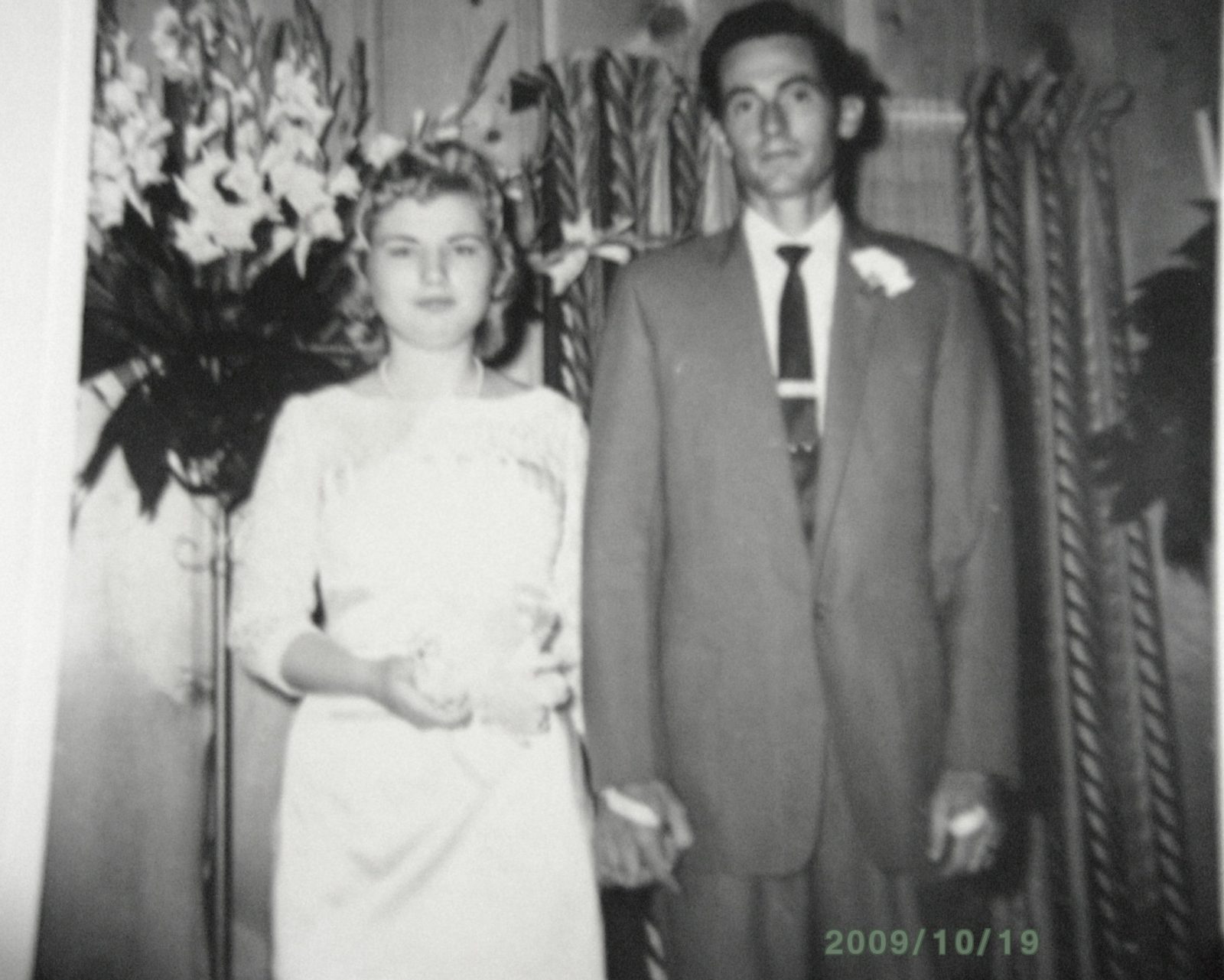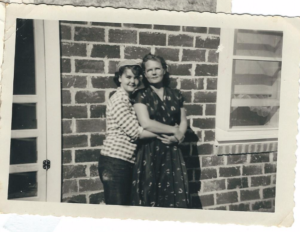
Lessons learned from this search:
- People’s birth dates aren’t always what they have been told (or what amended birth certificate says)
- 2nd – 4th cousins can be very helpful with sharing their information
- Children were somewhat disposable in some families during the depression, sadly
- Almost no one in Texas goes by their given name – Nicknames reign!
Having found the answer to who my brother’s birth parents were, I moved on to the question of who were the parents of his birth mom. Connie Gray, Texas search angel extraordinaire, told me early on that adoptions tend to run in families, and I began to see that over and over in searches.
My brother’s birth mom, Laurel, was born in Dallas, Texas in 1933 and adopted by a couple in Amarillo, Texas. She was raised as an only child. Did her parents know her biological mother? Was it a gray market adoption, not through an adoption agency? There was no way to tell, as all the players in this drama are no longer with us and the paperwork is non-existent. DNA was going to be the only way to figure this out.
Since I knew Laurel’s birth date (or thought I knew – I found later that her amended birth certificate changed it to a different day), and that she was born in Dallas County, Texas, I attempted to look her up in the Texas Birth records on davidgrayspeoplefinder.com. The only record of her being born on that date in that county was with her adoptive parents listed as if they were her birth parents. I could not find her birth mother’s maiden name that way.
I began to spend a lot of time with my brother’s DNA match list and the new biological family tree I began for him. And when I say a lot of time, I mean every possible minute. I got my brother’s DNA into GEDmatch.com and FamilyTreeDNA.com databases (for free) to see if he had closer maternal matches either place. I had the option to get him a 23andMe test for the same reason, to seek a closer match, but the price at the time was almost $200, and I was hoping we could find the answers without a lot of expenses, as money was tight. MyHeritage was not in the game yet. My advice now is for everyone to get in MyHeritage database, too (also free, at this time).
His closest maternal matches were a set of brothers who respectively shared 282 and 265 centiMorgans of DNA with my brother. Ancestry predicted they were 2nd cousins (2C) to my brother. Using The DNA Detectives Autosomal Statistics chart, I knew that there were five other possible relationships to consider based on how much DNA they each shared with my brother: First cousin once removed (1C1R), Half first cousin, Half great-uncle or nephew, First cousin twice removed (1C2R) or Half first cousin once removed.
One of those possibilities meant he could share a set of great-grandparents with them: Second cousin (2C). Half first cousin meant he would share just one of their grandparents. I had to start drawing out charts for the other possible relationships to see what generation of ancestor they might have in common with my brother. I’m a visual learner, so charts are everything to me.
One of his DNA matches did not have his DNA attached to a tree.
Learning Tip: If Ancestry tells you “No Tree” for a match, always open their profile and scroll down to see if perhaps they do have a public tree, and it just is not attached to their DNA. Caution: The public tree they have might not be for them, but for a spouse, or they might be adopted and be entering their adopted lines. But sometimes, you will find at least a small tree to give some direction.
The other brother had a slightly bigger tree, and so I studied that tree to determine which line was most likely to be the line my brother also came from. One way to focus it, is to try to find multiple occurrences of the surname in your DNA match lists. This is a version of tree triangulation, finding a point where three or more of the DNA match’s trees converge in the past. I started entering the most distant generations of that tree into my brother’s private research tree, as I knew one or more of them were also my brother’s ancestors, and it would just be a matter of time until I found records with my brother’s DNA match’s surnames that would connect two of the families together.
With my brother’s permission, I contacted Michael, one of the brothers who was a top match on my brother’s maternal side. Michael told me that he didn’t know a lot about his family history, or know many of his ancestors, except for his grandparents.
I shared the two photos of Laurel that we had to see if he noticed any resemblance to any of his aunts, uncles or grandparents. Remember: a striking resemblance to someone is not genealogical proof! And not resembling someone does not mean you can’t be related. I look very little like any of my siblings. But a close resemblance is a clue that can give you a line to investigate. Michael gave me the name of a cousin who was most interested in family history. He and this cousin both thought that the photos of Laurel looked an awful lot like one female relative in particular, his cousin’s mother.
Michael’s brother, JD, told me that there were only three surnames he knew in his family, besides their own surname. One of them was Jenkins, and I had already started looking very closely at the members of this family, based on several of my brother’s relatively high DNA matches having Jenkins in their tree from southern states of the USA.
Katherine Lavonia Jenkins, who married a Toney, was the grandmother of Michael and great-grandmother of Michael’s first cousin once removed (1C1R) who thought Laurel looked like her mother. Katherine/Kate had three brothers who did not live past childhood, so I could eliminate each of them as a possible birth parent to Laurel. At this point, I didn’t know if the Jenkins line was Laurel’s paternal or maternal line, so I had to look at all siblings.
In 1930 Katherine/Kate was married, had all her children, and her siblings had all flown their parents’ coop, except her two youngest sisters, living with their parents who ran a boarding house in Sherman, Texas. All roads led to this couple, George Parnell Jenkins and Nora Culley. My brother’s various DNA match’s trees indicated he shared DNA with people who had ancestors from both families. All I had to do was figure out which one of their descendants was Laurel’s mom or Laurel’s dad…There were several “candidates” of a plausible age in two different generations, who were in the right place at the right time.
I connected with the son of Michael’s youngest great-aunt, and he and his wife offered to drive to Sherman, Texas next time they had a day off and look into what happened to the boarding house. They had a friend who owned an antique store in Sherman, and they thought he might know something of the town history. I didn’t get a report back on this, but it was nice to know people were willing to be “boots on the ground,” and go check into things for people out-of-state.
I did a quick check for where the Jenkins siblings were living in 1935 (as listed on 1940 census) because being in the right place near the right time (of conception and/or birth) can be a strong clue in the search.
Less than two years after Laurel’s birth in Dallas:
- Katherine/Kate was in Dallas
- Hattie was in Rural, Taylor County
- Ethel was in Post, Garza County
- Owen was in Dallas
- Pearl was in Dallas
- Lillie Merle was in Dallas
They were almost all working in the textile industry, in the cotton factories. My next step was to find out the names of all their children and when they were born. If any of the women had a baby that was kept in the family at the same time Laurel was born, that would mean she couldn’t have had Laurel at the same time (although there are rare instances of one twin being brought up in the birth family and one being placed for adoption.)
As I went, I attached all records found to each person in the Ancestry tree.
I determined that Owen had at least one living child, a son who lives in Texas. I called him and his wife answered the phone. He is hard of hearing and prefers his wife talk on the phone and relay the messages. The first surprising thing they told me is that he didn’t really know all his siblings or his family all that well. I grew up in a family where I knew all about my cousins and aunts and uncles, even though we didn’t live in the same state. So I was blown away that it was possible someone didn’t know the names of all their siblings or half-siblings.
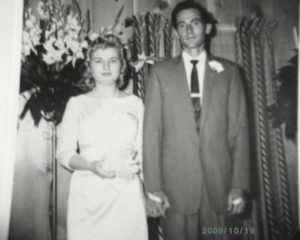
They were happy to help though, with what information they had. They sent me their wedding photo and other photos of their immediate family.
I was contacted by a DNA match who said her grandmother, born in 1930 in Texas, grew up in an orphanage. She is listed on the 1940 census in Boles Orphan Home in Quinlan, Hunt County, Texas, and also lived there in 1935. Later on, from finding her original birth certificate, I discovered she was Owen’s first child, born when he was 24. He and his wife at the time had another child, a boy, in 1932, and I found that original birth certificate online, listing him as legitimate with their names as his parents, baby 2 of 2 for Ruth. This baby was unnamed on the birth certificate and in the Texas birth books, though, which usually indicates an adoption. UPDATE: While working on post #4, the next post, I figured out this baby was later named and brought up by Ruth with her second husband, with her second husband’s surname! He passed away in 1996, but had three children.
The DNA matches to the set of brothers and to their nephew did not represent a spectrum across the branches of the family, so it could not narrow it down to one of their aunts being Laurel’s birth mother, or one of the great-aunts, or the possibility that their great-uncle Owen was Laurel’s birth father.
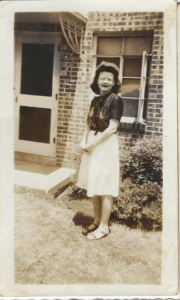
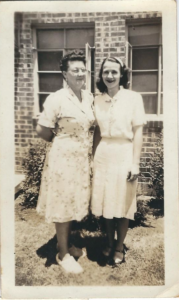
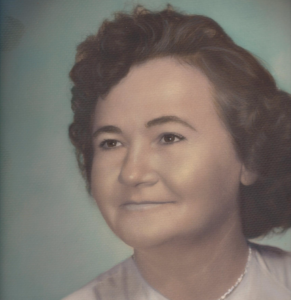
I spoke to the daughter of the second to the youngest great-aunt who had also passed away. This daughter was adopted herself, and her mom had no birth children. Her mom had been cremated and her daughter actually offered some ashes for us to test to help us get answers. That was an incredibly generous and kind offer, but right now there is not a company that advertises this service, and it would be very expensive. I believe the ashes would actually have to have a piece of bone or tooth in it to have a chance to get DNA, and even then it wouldn’t readily be able to be in a DNA match list database.
Not to be gruesome, but people do ask this question about testing cremains, and also ask if hair from a hairbrush or comb of someone deceased can be tested. Not readily at this time. You have to have the hair follicle, and LivingDNA in England is the only company who might consider testing this. You have to contact them directly to find out.
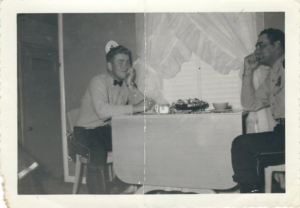
The youngest great-aunt’s son knew his Toney cousins well and sent me other photos. No new, close matches to my brother came in, so it was time to “target test” to narrow down which line of the family was more closely related to my brother, and thus to his birth mom. I chose the cousin who was into family history, the daughter of the one who looked very much like Laurel, and Owen’s oldest known son whose wife I’d talked to on the phone. They both agreed to take DNA tests. At the time, ancestry.com turnaround was over 8 weeks, so we waited for the results. In the meantime I built the Jenkins and Culley lines back as far as I could with documentation, kept working on using the chromosome browser and tools at GEDmatch.com and on organizing DNA matches.
To be continued!
